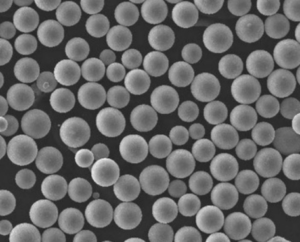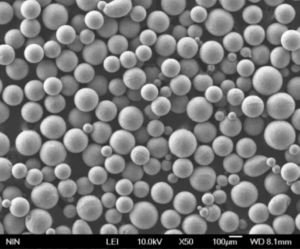概要 電子ビーム積層造形 (EBAM)
複雑な金属部品を、驚くほどの精度で、無駄を最小限に抑えながら、1層ずつ作り上げることができることを想像してみてほしい。まるでSF映画のようでしょう?電子ビーム積層造形(EBAM)の世界へようこそ。この最先端技術は、電子ビームを使用して金属粉末やワイヤーを溶かし、複雑な細部と堅牢な特性を持つ3Dオブジェクトを作成します。
EBAMは、特に航空宇宙、自動車、医療用途の高品質で高強度なコンポーネントを製造する能力で、積層造形において際立っている。EBAMの仕組み、使用される金属粉末の種類、その特性、そしてこの技術が製造業に革命をもたらしている理由について詳しく見ていこう。
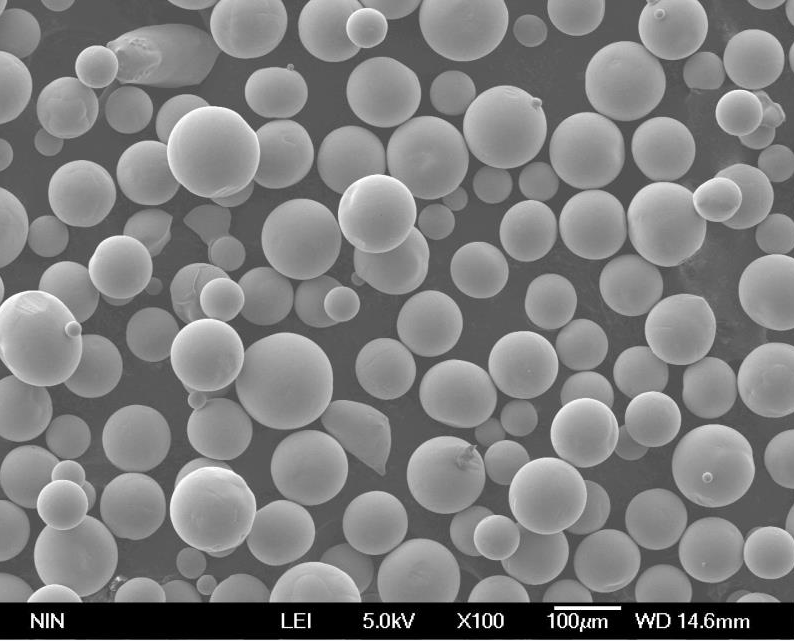
EBAM用金属粉末の種類
| 金属粉 | 構成 | プロパティ | 特徴 |
|---|---|---|---|
| チタン(Ti-6Al-4V) | Ti、Al、V | 高強度、耐食性 | 軽量、生体適合性 |
| Inconel 718 | Ni、Cr、Fe、Nb、Mo | 高温耐久性 | 航空宇宙とタービンに最適 |
| ステンレススチール(316L) | Fe、Cr、Ni、Mo | 耐食性、高強度 | 医療および食品産業で一般的 |
| アルミニウム (AlSi10Mg) | Al、Si、Mg | 軽量、優れた熱特性 | 自動車および航空宇宙分野で使用 |
| コバルトクロム(CoCr) | Co、Cr、Mo | 耐摩耗性、高強度 | 医療用インプラントで人気 |
| 工具鋼(H13) | Fe、Cr、Mo、V | 高い靭性、耐摩耗性 | 金型に使用される |
| ニッケル合金(ハステロイX) | Ni、Cr、Fe、Mo | 耐酸化性、耐腐食性 | 化学および航空宇宙産業で使用 |
| 銅(Cu) | 銅 | 優れた導電性、延性 | 電気および熱用途に使用 |
| チタン(CP-Ti) | Ti | 高い強度対重量比、耐食性 | 航空宇宙および医療に使用 |
| マルエージング鋼 (18Ni300) | Fe、Ni、Co、Mo | 高い強度と靭性 | 航空宇宙と工具に使用 |
構成 電子ビーム積層造形 (EBAM)
EBAMの魔法は、その素材と組成にある。最も一般的に使用される材料は金属粉末またはワイヤーで、それぞれ様々な産業用途に適した特定の特性を持つものが選ばれている。EBAMに使用される最も一般的な金属粉末をいくつか紹介しよう:
- チタン(Ti-6Al-4V): チタン、アルミニウム、バナジウムのブレンドであるこの合金は、高強度、軽量、優れた耐食性を提供する。生体適合性が高いため、航空宇宙や医療用インプラントで特に好まれている。
- インコネル718 ニッケル、クロム、鉄、ニオブ、モリブデンから成るインコネル718は、高温耐性と耐久性で知られ、タービン・エンジンやその他の航空宇宙用途に最適である。
- ステンレススチール(316L): クロム、ニッケル、モリブデンを含むこの鉄基合金は、耐食性と高強度で知られ、医療機器や食品産業機器に理想的です。
- アルミニウム(AlSi10Mg): アルミニウム、シリコン、マグネシウムで構成されるこの合金は、軽量で優れた熱特性を誇り、自動車や航空宇宙分野で愛用されている。
- コバルトクロム(CoCr): コバルト、クロム、モリブデンの合金であるCoCrは、耐摩耗性と高強度を持ち、医療用インプラントによく使用される。
- 工具鋼(H13): 鉄、クロム、モリブデン、バナジウムを含む合金鋼で、高い靭性と耐摩耗性で知られ、金型や工具に使用される。
- ニッケル合金(ハステロイX): ニッケル、クロム、鉄、モリブデンから成るこの合金は、耐酸化性と耐食性に優れ、化学処理や航空宇宙産業で広く使用されている。
- 銅(Cu): 純銅はその優れた電気伝導性と熱伝導性で知られ、さまざまな電気や熱交換の用途に使用されています。
- チタン(CP-Ti): 市販の純チタンは高い強度対重量比と優れた耐食性を持ち、航空宇宙や医療用途に適しています。
- マルエージング鋼(18Ni300): 鉄、ニッケル、コバルト、モリブデンから成るこの鋼合金は、高い強度と靭性を持ち、航空宇宙や工具用途に理想的です。
電子ビーム積層造形(EBAM)の特徴
EBAMは単に金属を溶かすだけでなく、精密さ、効率性、そして品質にこだわっています。EBAMを際立たせている特徴を詳しく見てみましょう:
- 精度が高い: EBAMは、航空宇宙や医療分野の高性能部品に不可欠な、公差の厳しい複雑な設計を行うことができます。
- 効率が良い: 電子ビームを使うことで、EBAMは金属粉末やワイヤーを素早く溶かすことができ、従来の方法に比べて製造工程を大幅にスピードアップできる。
- 汎用性がある: EBAMは、軽量のアルミニウムから超高強度のチタン、耐熱性のインコネルまで、幅広い金属や合金に適合する。
- 強度と耐久性: EBAMで製造された部品は優れた機械的特性を示し、しばしば従来の製造技術で製造されたものを凌駕する。
- 廃棄物を最小限に抑える: EBAMはアディティブ・プロセス(積層造形)であり、必要な材料のみを使用して部品を一層ずつ造形するため、廃棄物を最小限に抑え、コストを削減することができる。
- スケーラビリティ: 一つのプロトタイプの生産であれ、大規模な製造であれ、EBAMは様々な生産ニーズに応えるスケーラビリティを提供する。
- カスタマイズ: EBAMは部品のカスタマイズが容易であるため、特定の要件に合わせた特注部品の作成に最適です。

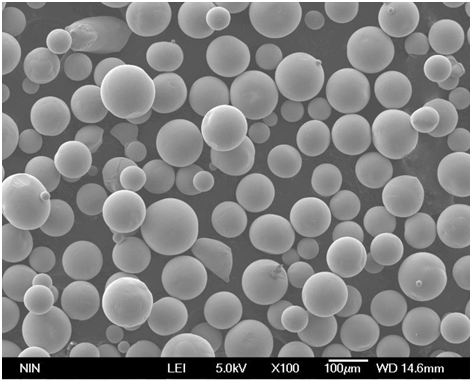

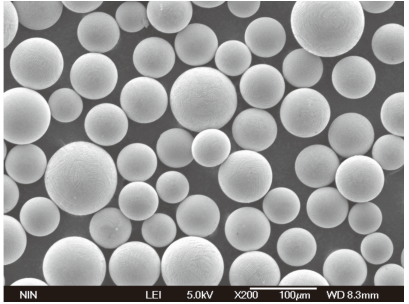
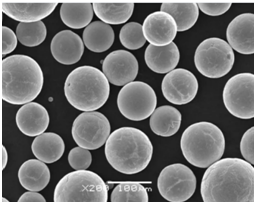
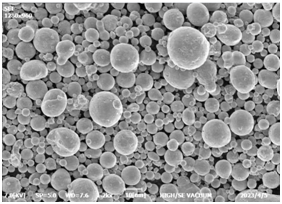
電子ビーム積層造形(EBAM)の利点
なぜEBAMを製造ニーズに検討する必要があるのでしょうか?説得力のある理由がいくつかあります:
- 設計の柔軟性: EBAMは、従来の製造方法ではしばしば不可能な複雑な形状を可能にします。重量を増やすことなく機能性を高める複雑な格子構造や内部チャンネルを考えてみてください。
- 材料効率: EBAMは必要な量の材料しか使用しないため、廃棄物が大幅に削減され、減法的製造プロセスと比較してより持続可能な選択肢となる。
- 費用対効果の高いプロトタイピング: EBAMを使えば、プロトタイプの作成がより迅速かつ安価になり、金型や工具に高いコストをかけることなく、より迅速な反復と革新が可能になる。
- 機械的特性の向上: EBAMによって製造された部品は、急冷プロセスによって達成された微細構造により、優れた機械的特性を示すことが多い。
- 高い蒸着率: EBAMは高い蒸着率を達成できるため、生産時間の短縮につながり、これは迅速なターンアラウンドを必要とする業界にとって極めて重要である。
- リードタイムの短縮: 大掛かりな金型を必要とせず、迅速な生産を可能にするEBAMは、リードタイムを大幅に短縮し、企業が製品をより早く市場に投入できるよう支援する。
電子ビーム積層造形(EBAM)の用途
EBAMの多用途性と精度は、様々な業界において幅広い用途を開拓しています。EBAMが大きなインパクトを与えている主な分野をいくつか見てみよう:
| 産業 | 申し込み | メリット |
|---|---|---|
| 航空宇宙 | エンジン部品、構造部品 | 軽量、高強度、設計の柔軟性 |
| 自動車 | カスタム部品、軽量部品 | 軽量化、性能向上 |
| メディカル | インプラント、補綴物、手術器具 | 生体適合性、カスタマイズ |
| エネルギー | タービンブレード、熱交換器 | 高温耐性、効率 |
| 工具 | 金型、金型、カスタムツール | 耐久性、精度、リードタイムの短縮 |
| エレクトロニクス | ヒートシンク、導電性部品 | 優れた熱伝導性と電気伝導性 |
| ディフェンス | 武器部品、軽量装甲 | 強度、耐久性、軽量性 |
EBAM材料の仕様、サイズ、グレード、規格
EBAMに関しては、材料の仕様、サイズ、等級、規格を理解することが、望ましい性能と品質を確保するために極めて重要です。ここでは、包括的な表をご紹介します:
| 素材 | 仕様 | サイズ | グレード | 規格 |
|---|---|---|---|---|
| チタン(Ti-6Al-4V) | ASMB348、AMS4928 | 10-45 µm | グレード5 | アストマ F2924、アムス 4998 |
| Inconel 718 | ASMB637、AMS5662 | 15-53 µm | – | AMS5663、ASM F3055 |
| ステンレススチール(316L) | ASM276、AMS5653 | 15-45 µm | – | アストレムF138、アストレムF799 |
| アルミニウム (AlSi10Mg) | DIN EN 1706 | 20-63 µm | – | ISO 3522 |
| コバルトクロム(CoCr) | ASTM F75、ISO 5832-4 | 15-45 µm | – | ASTM F1537 |
| 工具鋼(H13) | アストマムA681、アムス6487 | 15-53 µm | – | ASTM A681 |
| ニッケル合金(ハステロイX) | ASMB435、AMS5754 | 15-45 µm | – | AMS5536、ASM B619 |
| 銅(Cu) | アストレムB170、アストレムB224 | 15-45 µm | ASTM F68 | |
| チタン(CP-Ti) | アストレムB348、アストレムF67 | 10-45 µm | グレード1、グレード2 | AMS 4900、ASM F1580 |
| マルエージング鋼 (18Ni300) | ASM538、AMS6521 | 15-45 µm | AMS6514、ASM538 |
EBAM材料のサプライヤーと価格詳細
EBAM材料の品質と一貫性を確保するためには、適切なサプライヤーを見つけることが重要です。ここでは、評判の良いサプライヤーを価格と共にご紹介します:
| サプライヤー | 素材 | 価格(kgあたり) | 連絡先 |
|---|---|---|---|
| カーペンター・テクノロジー | チタン(Ti-6Al-4V) | $250 – $300 | www.carpentertechnology.com |
| サンドビック | Inconel 718 | $400 – $450 | www.materials.sandvik |
| プラクセア・サーフェス・テクノロジー | ステンレススチール(316L) | $150 – $200 | www.praxairsurfacetechnologies.com |
| LPWテクノロジー | アルミニウム (AlSi10Mg) | $100 – $150 | www.lpwtechnology.com |
| アルカムAB | コバルトクロム(CoCr) | $350 – $400 | www.arcam.com |
| ヘガネス | 工具鋼(H13) | $180 – $220 | www.hoganas.com |
| ヘインズ・インターナショナル | ニッケル合金(ハステロイX) | $500 – $550 | www.haynesintl.com |
| アメリカの要素 | 銅(Cu) | $50 – $100 | www.americanelements.com |
| チタン加工センター | チタン(CP-Ti) | $200 – $250 | www.titaniumprocessingcenter.com |
| レニショー | マルエージング鋼 (18Ni300) | $300 – $350 | www.renishaw.com |
長所と短所 電子ビーム積層造形 (EBAM)
他の技術と同様、EBAMにも利点と限界がある。以下はその比較である:
| メリット | デメリット |
|---|---|
| 高い精度と正確さ | 高い初期設定費用 |
| 材料廃棄の削減 | 専門的な知識とトレーニングが必要 |
| 複雑な形状の製造能力 | 他の方法に比べ、材料の選択肢が限られている |
| 生産時間の短縮 | 高いエネルギー消費 |
| 丈夫で耐久性のある最終製品 | 限られたサイズ |
| カスタマイズと柔軟性 | 後処理が必要な場合が多い |
| 高い蒸着率 | 表面仕上げに追加作業が必要な場合がある |

よくある質問
| 質問 | 回答 |
|---|---|
| EBAMとは? | EBAMは、電子ビームを使用して金属粉末やワイヤーを溶かし、パーツを層ごとに造形する3Dプリントプロセスである。 |
| EBAMは他の積層造形法とどう違うのですか? | EBAMは電子ビームを使用し、高い精度と高温材料の加工能力を提供する。 |
| EBAMで使用できる素材は? | 一般的な材料としては、チタン合金、インコネル、ステンレス鋼、アルミニウム合金、コバルトクロムなどがある。 |
| EBAMの主な用途は? | EBAMは航空宇宙、自動車、医療、エネルギー、工具、エレクトロニクス、防衛産業で使用されている。 |
| EBAMは費用対効果が高いのか? | EBAMは初期設定コストが高いが、材料の無駄と生産時間を削減し、長期的なコスト削減を実現する。 |
| EBAMの限界とは? | EBAMは、専門的な設備と知識を必要とし、エネルギー消費量が多く、建物の大きさによって制限される。 |
| EBAMはどのようにして部品の品質を確保しているのですか? | EBAMは高精度を提供するが、表面仕上げや所望の特性を得るために後加工が必要になる場合がある。 |
| EBAMは大量生産に使えますか? | はい、EBAMは拡張性があり、用途に応じてプロトタイプにも量産にも使用できます。 |
| EBAMの環境面でのメリットは? | EBAMは廃棄物を最小限に抑え、材料を効率的に使用することで、より持続可能な製造方法に貢献している。 |
| EBAMに適した素材を選ぶには? | 材料の選択は、要求される特性と用途によって異なります。サプライヤーや専門家に相談することで、正しい決断ができます。 |
